Rock and Variety
MUSIC hall and variety must have informed the music of The Beatles and The Kinks and most other British rock musicians born in the 1940s, and still lingers on through their influence. You can hear echoes of it in so many songs of the 1960s and 1970s – a jauntiness, an irony, a stoicism – and you can see it on the cover of Sgt Pepper’s Lonely Hearts Club Band. Among the dozens of figures in Peter Blake’s collage, three cheeky variety stars from the 1940s peep out: Max Miller (‘The Cheeky Chappie’), Issy Bonn (‘And His Famous Finkelfeffer Family’) and Tommy Handley (‘It’s That Man Again!’).
Variety’s profound impact on British songs of the 1960s and 1970s has never really been properly examined. It’s reasonable to speculate that Paul McCartney, Ray Davies, Elton John and the rest would have been bombarded with music hall stuff, soaking in as they sat on their mothers’ knees, or, a few years later when, clad in their baggy grey shorts and Aertex vests, they played with their Meccano sets or read their Beanos and Dandys with the BBC Light Programme’s Children’s Favourites on in the background.
On that show they would have heard Arthur Askey’s The Bee Song, Charles Penrose and his Laughing Policeman, George Formby’s less-rude numbers (the BBC banned the rest), Mr Flotsam and Mr Jetsam with Little Betty Bouncer, Leslie Sarony down on Jollity Farm, Sandy Powell’s Lost Policeman, Flanagan and Allen with Run Rabbit Run. The long-running Workers’ Playtime had a variety comedian on almost every lunchtime. And children’s comics of the era – Film Fun, Radio Fun etc – featured the fictional adventures of comedians.
And if they did have a television in the home, perhaps originally bought or rented to watch the Coronation in 1953, the monochrome fare on offer included variety shows starring Jewel and Warriss, Tommy Trinder, Max Wall, Jimmy Wheeler, the legendary sand-dancers Wilson, Keppel and Betty, Mr Pastry, The Billy Cotton Band Show, The Black and White Minstrels, Doddy, Terry Hall and Lenny the Lion, Sunday Night at the London Palladium. Broad, safe and cosy, the interminable BBC pastiche show The Good Old Days introduced music hall’s sentimentality and sauciness to uninterested new generations but omitted any of the cleverness and sly subversion that might have provided points of identification.
Kids growing up in the 1950s probably listened to their parents and grandparents warbling snatches of music hall and variety songs, too, sentimental or comic to suit the mood, for the songs of our youth replay in our heads for the rest of our lives. Or they heard baffling catchphrases, chortled as a kind of secret language between mum and dad: ‘It’s being so cheerful as keeps me going.’ ‘By Jove, I needed that!’ ‘Ay thang yew!’ ‘Lovely grub!’ ‘Can you hear me, mother?’ ‘Gently, Bentley!’ ‘She knows, y’know.’ ‘Right, monkey!’ ‘I won’t take me coat off, I’m not stopping.’ ‘Somebody pinched me puddin!’
Elements of what those children absorbed were to emerge later, transmuted into rock gold. The Beatles were mostly influenced by American music, of course, but many of Lennon and McCartney’s songs have that music hall jauntiness, either through wit and wordplay or through the kind of narrative cohesion that also typified the best music hall songs: the storytelling and deft, subtle characterisation of Eleanor Rigby, Lovely Rita, Penny Lane, Day Tripper, For the Benefit of Mr Kite, Maxwell’s Silver Hammer, She’s Leaving Home, Your Mother Should Know and, of course, the wry humour of When I’m Sixty-Four.
The Kinks were just as heavily influenced: Waterloo Sunset, Have A Cuppa Tea, Lola, Sunny Afternoon – clever song-stories, evoking a whole scenario. Dedicated Follower of Fashion is pure music hall. Ian Dury and most of his songs could have been transplanted back into the great days of music hall and variety virtually unchanged except for a few topical references. Vivian Stanshall found much of the Bonzo Dog Doo-Dah Band’s material on old 78rpm novelty records by music hall performers, picked up at street markets and jumble sales.
However, the only genuine rock star I actually know personally hated anything to do with variety entertainment when he was growing up in Manchester in the 1950s. Kevin Godley, of 10cc (Rubber Bullets, Wall Street Shuffle, I’m Not In Love etc) and Godley and Crème, was at school with me and we are still in touch from time to time. He told me: “I think your theory makes perfect sense with one small caveat. Distance. That music was so English and charming and there was enough cultural distance between our parents’ musical leanings and pure Music Hall to warrant reappraisal by the musical baby boomers. Our house was full of opera and Frankie Laine and Bing Crosby, and I imagine the same was true of Macca and John’s.
“That extra time distance, I believe, cut through the Matt Monroes and Sinatras and spoke of more eccentric times. The Bonzos are an interesting case as they seemed to be rooted in the past and only slightly infected by the future, which was the opposite of The Beatles and Kinks. I have to say Music Hall and Variety turned me off. I hated Arthur Askey. Never found him funny. The London Palladium was the last gasp of a world of corn that was total anathema to me. Dickie Henderson made me want to puke.”
Oh well, there goes that theory . . . except that Ray Davies himself told me a different story when I asked him about it at a Q&A session in Dublin in 2014 when he was promoting his autobiography. “My Dad loved jazz and also music hall,” he replied. “When I could barely walk he took me to see a comedian named Max Miller. So it’s ingrained in me. I love the music of previous generations.”
And in the 1920s and 1930s the veterans in the Artists section of this site had certainly been like rock stars, too. Several had sold gramophone records by the million. Some had been big names on Broadway, and all had performed before British Royalty. They had been mobbed by fans at stage doors. A few had been quite substantial film stars, back in the day, or top radio personalities with their own long-running shows. They had been hot.
They knew each other well, the members of our little gang, because almost all of them spent the twilight of their careers steeped in nostalgia, appearing together in Golden Years of Music Hall, Good Old Days and Thanks For the Memory shows, seaside summer seasons or Christmas panto, or, in the case of a couple of them, working behind the scenes as producers. At any given time in the early 1970s there might be two or three of them in, say, Eastbourne, a couple more in Blackpool and the rest in another show in Brighton, supported by bills of younger artists. They banded together to tour South Africa and Australia, too, to entertain emigrants who remembered them in their prime.
They were in the same shows because that was mostly all that was left for artists of their very particular talents. And their audiences, like the those at the concerts of Dylan, The Eagles, Bruce Springsteen and Neil Young nowadays, consisted mainly of their contemporaries in age, and the last of the great variety stars were fulfilling exactly the same function as today’s wrinkly rockers: taking people back to The Happy Place.
Paul McCartney still sometimes tours, too.
Yesterday . . .
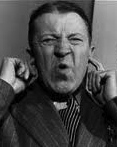
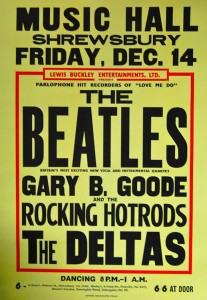
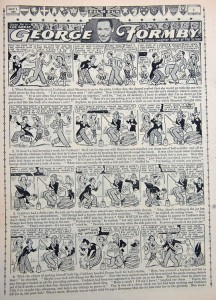
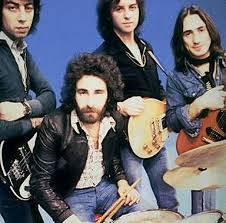
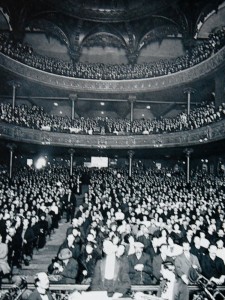
stephendee
| #
Doesn’t ring a bell with me, Stefan, tho it’s a very typical Sarony line. Anyone? Stephen
stefan Beard
| #
Just been reading the Leslie Sarony piece. Absolutely fantastic. Well done. A question if you don’t mind. Does anyone know the the title of the Leslie Sarony song that has the line “Oi ! how you gettin’ on? ” in it ?
ruskimic
| #
I do hope you can help me. I have been searching for many years for my Great Uncle Mr Albert Edward Rayner who went under the name of Dan Rayner. I believe he worked the Music Halls but I do know for sure he worked with Fred Karno. When Charlie Chaplin left Fred in America over a Pay dispute the American backers of the tour insisted that my Great Uncle Dan Rayner be called over from England to take Charlie Chaplin’s Place. It appears Dan was liked more at that time in America than Charlie was. Another man in the troupe at that time was Stan Laurel. When the show folded Dan was asked along with Stan to stay in America. As we know Stan stayed and found he fame and fortune. Dan however chose to return to England. He was last that I can find in a play Dick Wittington at the Empire Theatre advertised in the a local paper in Durham in 1948. Unfortunately I have not been able to find when or where he died. I am hoping that maybe on your search you came across some info on Dan Rayner. I live in Australia so am unable to search all the death records for England with out it costing me a fortune. So any help you maybe able to give me would be really appreciated. I know he went to America twice and once to Australia and also once to South Africa. I do know he was married to a lady named Barbara Robinson and they had a son Conrad Paul Rayner but I have been unable to find any thing out about these two members of his family. I do know they separated before 1935 and he lived with another lady named Phyliss but as to her last name I have no idea. I have been searching for nearly 10 yrs now and I don’t think there is any thing left on the net that can help me. You it would appear maybe my last chance. I will keep my fingers crossed that you did come across some info on him or you know some one that maybe able to help. He went to America in 1913 on the Lusitania and it shows at this time he is married. He then returns to America in 1914 on the ship Adriatic. I do believe he also did a radio show after 1935 for quite some time but do not know the name of that show. I do hope you can help in my search for my Great Uncle.
I also might add my great grandfather was Edwin Richard Barwick. He was also a Music Hall performer and appeared in the first Royal Command Performance. If you get the picture and Index to that even you will see him standing next to Pavlova. I would love to hear any information you may have found out about him. I do believe he was one of the first members of the charity named water rats, I know star was spelt back wards to get the rats part. Edwin did a lot of work for this charity in his day. What I would love to know is if there is any recording of Edwin Performing and if so how I would go about getting a copy or seeing any recording. I do have a photo copy of an old theatre bill with my grandfathers name boldly written on it. Again any help would be appreciated.
All the best and I look forward to hearing back from you in the near future
Kim Rayner
my email address is ruskimic@yahoo.com.au